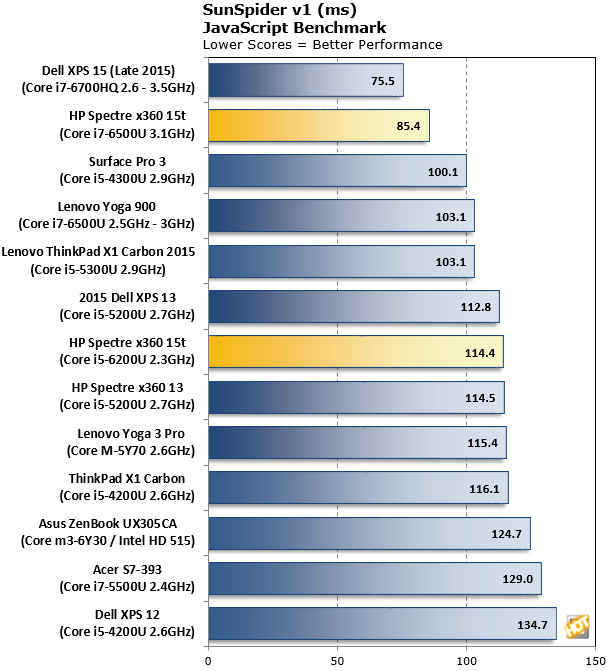HP Spectre x360 15t Review: A 4 Pound Convertible Beauty
|
SunSpider is a well-known JavaScript benchmark. The test is designed for comparing browsers to each other, so it’s worth pointing out that different Web browsers can have an impact on scores.

The Core i5-powered Spectre x360 kicked off the benchmarks with a fairly uninspiring SunSpider score that put it just behind last year’s model. But, as we found out, that turned out not to be a trend and the Core i7-based model put up some really nice numbers.
|
Futuremark’s PCMark 8 runs the system through typical home and work activities and provides individual scores for certain task categories, rather than specific hardware. The Home test is just as it sounds: a collection of everyday tasks, including web browsing and chatting. The Work test is more demanding and has business-oriented tests, while the laptop’s SSD gets workout in the Storage test.

We expected the Spectre x360 to perform well in PCMark 8, thanks to its powerful CPU and GPU, and it did. The system took the top score in both the Home and Work Accelerated tests and put up a solid showing in the Storage benchmark as well. Through, we should point out that the system has a Sandisk M.2 SATA SSD, which doesn't offer nearly the peak bandwidth of NVMe-based offerings. So, while responsiveness is very good, peak bandwidth will trail some other premium ultrabooks.






